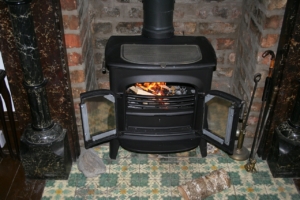As the winter season draws to a close and the pleasant warmth of spring arrives, it’s essential to start preparing for the scorching summer days. One significant aspect of home maintenance that often goes overlooked is the regular inspection and servicing of your air conditioning system. Though it may seem unnecessary, getting your AC checked before summer can save you from discomfort, high energy bills, and unexpected breakdowns. This blog post will explore the top 3 reasons to get your home air conditioning system checked before summer.

Top 3 Reasons to Get Your Home Air Conditioning System Checked Before Summer
Ensuring Optimum Performance
To provide a comfortable living environment during the sweltering heat, it is crucial to have an air conditioning system that performs at its peak efficiency. You can identify and address potential issues hindering your AC system’s performance by scheduling a professional inspection before summer begins. A routine maintenance check will involve cleaning or replacing air filters, examining and cleaning coils, calibrating thermostat settings, and checking refrigerant levels, among other tasks. This comprehensive inspection ensures your AC unit can deliver maximum cooling capacity, facilitating a comfortable indoor atmosphere throughout the summer.
Avoiding Costly Repairs
Regular maintenance and preventive checks are always more cost-effective than emergency repairs, especially air conditioning systems. Addressing minor issues early helps prevent them from escalating into more significant problems that could lead to a complete system shutdown or expensive repairs. During the inspection, an experienced technician can detect faulty components, loose electrical connections, or potential leaks and rectify them before they result in a complete system failure. Investing in a check-up can save you from unexpected repair costs and the inconvenience of spending days without an air conditioner during the year’s hottest days.
Energy Efficiency and Cost Savings
An improperly functioning AC system can significantly increase energy bills due to reduced energy efficiency. Having your air conditioning system checked and tuned before summer ensures that it operates optimally, using less energy to cool your home. Technicians can identify issues such as clogged filters, refrigerant leaks, or damaged ductwork that may affect the system’s performance. With a clean and well-maintained system, you can enjoy lower monthly energy bills while minimizing your carbon footprint.
Getting your home air conditioning system checked before summer’s arrival might seem unnecessary, but the long-term benefits outweigh any inconvenience. Scheduling a professional inspection enhances the performance and efficiency of your AC unit and helps you save money on costly repairs and reduce energy consumption. So, don’t wait until the heat of summer overwhelms you—take the time now to get your air conditioning system checked, ensuring a cool and comfortable home throughout the season.


